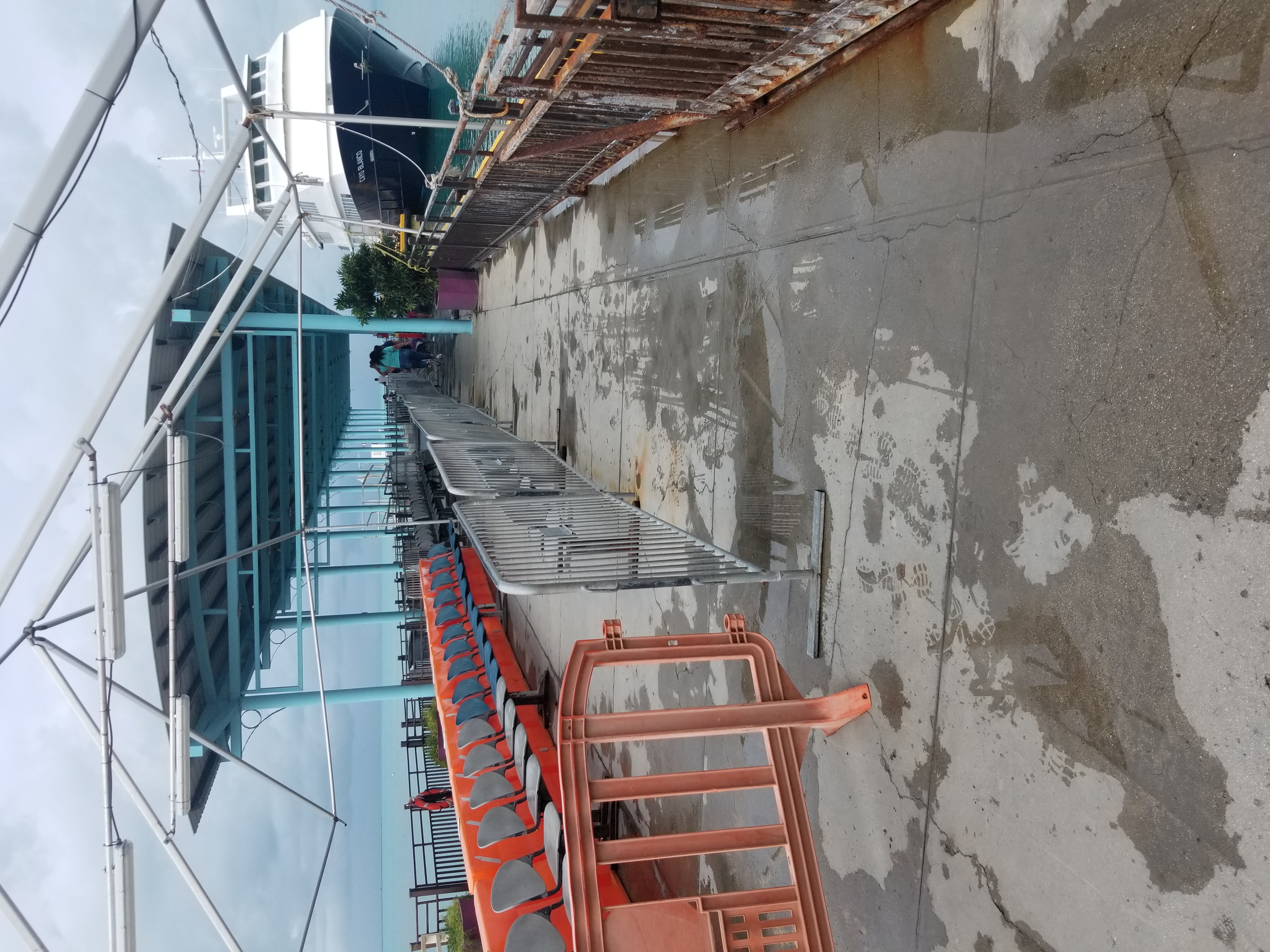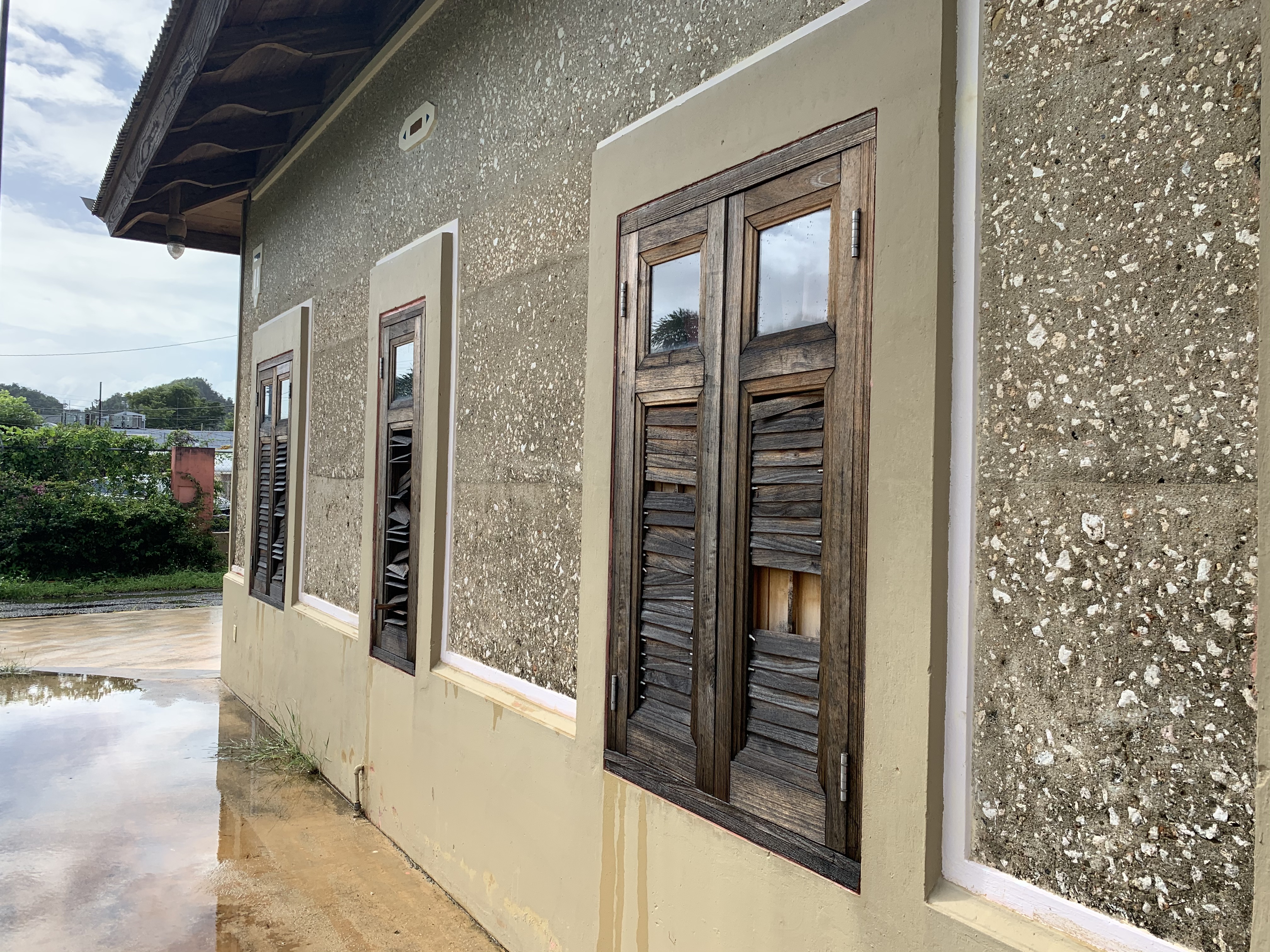Transportation facilities and rolling stock are characterized as having depreciation caused by their intensive uses. Transit vehicle depreciation is determined according to the FTA’s straight line depreciation for various vehicle types.
The case for transit facility depreciation wear is less clear. The components of a transit asset may become worn and unsafe to use at different rates, so no two transit facilities are expected to depreciate equally. In order to determine the worthiness of a transit facility, it is necessary to each component and subcomponents) independently.
Our experience with infrastructure assessments includes over 80 facilities that include administrative buildings, parking facilities, passenger terminals and buildings, and maintenance facilities.
Case Study 1: Maritime facility in Vieques
The municipality of Vieques has a ferry terminal at Isabel Segunda in the island municipality. Alongside the airport, the ferry terminal is one of the most important transportation facilities in the island municipality. The facility, however, is in a state of disrepair which presents potential safety and security concerns for passengers using the facility and for the ferry system employees.
The following components of the passenger facility were found in need replacement or rebuilding:
- Roof (sealing cracks and resealing surface)
- Interior ceilings in second level of the building
- Power panel
- Lighting systems (fixtures, bulbs and wiring) on passenger boarding area and interior hallways
- Surveillance cameras and recording equipment
- Impact barriers on docks
- Vessel restraints
- Pavement markings, hazard areas and warning signage
- Passenger signage and markings in walkways and floor
- Lack of ADA platform warning areas
Case Study 2: Public Transportation facilities in Vega Baja
The Municipality of Vega Baja owns and operates two passenger facilities and one maintenance facility. The passenger facilities are mixed use buildings that support other services and retail for two different modes of transportation.
Public Transportation Terminal Hector Sandín Joy
The Hector Sandín Joy transit terminal is a mixed use facility that doubles as a marketplace. The facility has parking on the second and third level for visitors of the marketplace and neighboring street blocks. The facility was evaluated as a whole unit, taking into consideration that Federal funds were invested in the construction of this building.
The transportation facility is used mainly for Público transit services. The different subcomponents of the facility were found to be in a good state of repair, with the exception of the elevators. The elevator systems were found to be critically damaged and in need of replacement.
Public transportation vehicle maintenance shop
The municipality has a dedicated transit vehicle maintenance facility separate from the Public Works vehicle maintenance shops.
Having a separate facility for FTA-funded vehicles enables the municipality to dedicate resources and equipment to their eleven transit revenue units, resulting in less downtime and better performance for the transit service.
In general terms, the facility was found in a good state of repair. There were, however, elements on the site in poor or critical condition due to inadequate grounds-keeping such as overgrown ivies and unkempt bushes causing damage to the cyclone fence encircling the facility.
Antiguo Terminal El Tren
This facility, despite its name, is the most recent passenger facility built in Vega Baja. This facility serves the municipal trolley routes and is a reconstruction of an old train station. The facility also houses the administrative offices of the municipal transit system and has a playground on the site grounds.
Overall, the facility is in a good state of repair, with most of the components in good or above fair condition. Some components of the facility were found to be in poor condition are largely exterior items such as doors and windows which have been battered by sun and rain.













